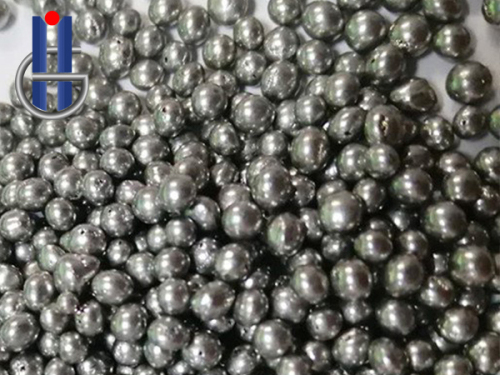Introduction:
The electronics manufacturing industry has witnessed a significant shift towards environmentally friendly practices, leading to the widespread adoption of
lead-free solder balls. As concerns about environmental impact and human health grow, the transition from traditional lead-based solder to lead-free alternatives has become a priority. This article delves into the features, benefits, and implications of lead-free solder balls in electronic manufacturing.
Environmental Considerations:
Lead-free solder balls address environmental concerns associated with the disposal and recycling of electronic devices. Lead, a hazardous material, poses risks to both human health and the environment. The shift to lead-free solder aligns with global efforts to reduce the environmental footprint of electronic waste.
Compliance with Regulations:
Stringent regulations, such as the Restriction of Hazardous Substances (RoHS) directive, mandate the reduction or elimination of hazardous materials in electronic products. Lead-free solder balls ensure compliance with these regulations, promoting the development and sale of electronics that meet international environmental standards.
Improved Reliability and Performance:
Lead-free solder balls exhibit mechanical and thermal properties comparable to traditional lead-based solder. In some cases, lead-free alternatives demonstrate improved reliability, longevity, and resistance to thermal cycling, contributing to enhanced overall performance and durability of electronic components.
Tin-Based Alloys:
Commonly used lead-free solder ball compositions include various tin-based alloys. These alloys, such as tin-silver-copper (Sn-Ag-Cu) and tin-silver (Sn-Ag), offer excellent soldering characteristics and have become industry standards for applications ranging from surface mount technology (SMT) to ball grid array (BGA) packaging.
Reduced Risk in Manufacturing Processes:
The elimination of lead in solder balls reduces health risks for manufacturing personnel. Lead exposure, even in small amounts, can have adverse effects. The shift to lead-free solder not only aligns with environmental goals but also prioritizes the well-being of workers involved in the manufacturing processes.
Compatibility with Miniaturization Trends:
Lead-free solder balls support the ongoing trend of miniaturization in electronic devices. As electronic components become smaller and more densely packed, the reliable and efficient performance of lead-free solder is crucial in ensuring the integrity of connections and preventing potential failures in compact electronic assemblies.
Global Industry Adoption:
The global electronics manufacturing industry has embraced lead-free solder technology. Major players in the semiconductor and electronic components sector have made significant investments in research and development to optimize lead-free solder formulations, contributing to the widespread acceptance of this eco-friendly alternative.
Conclusion:
Lead-free solder balls represent a pivotal development in the electronics manufacturing landscape. With their environmental benefits, compliance with regulations, improved reliability, and support for miniaturization trends, these solder balls have become a cornerstone of sustainable and forward-thinking electronic manufacturing practices. As the industry continues to prioritize environmentally conscious solutions, the adoption of lead-free solder is poised to remain a central focus in the pursuit of cleaner and more efficient electronics production.


 High Purity Tin Ingot: Crucial Applications and Benefits
High Purity Tin Ingot: Crucial Applications and Benefits
 Pure Tin Ingot: Essential Material for Diverse Industrial Applications
Pure Tin Ingot: Essential Material for Diverse Industrial Applications
 Unlocking the Potential of Pure Tin Bars: Essential Components for Diverse Industries
Unlocking the Potential of Pure Tin Bars: Essential Components for Diverse Industries
 Lead Bar for Sale: Uses, Specifications, and Buying Considerations
Lead Bar for Sale: Uses, Specifications, and Buying Considerations